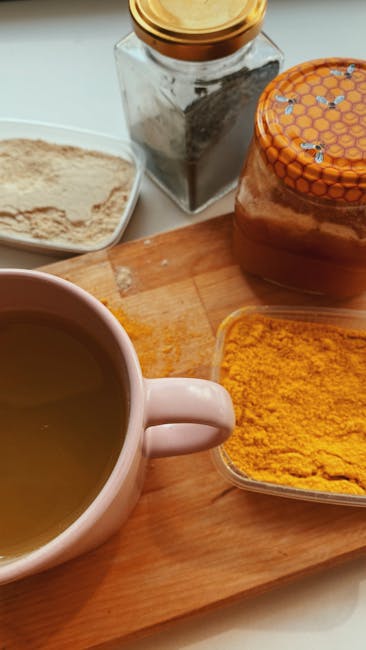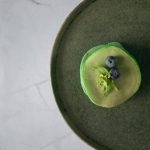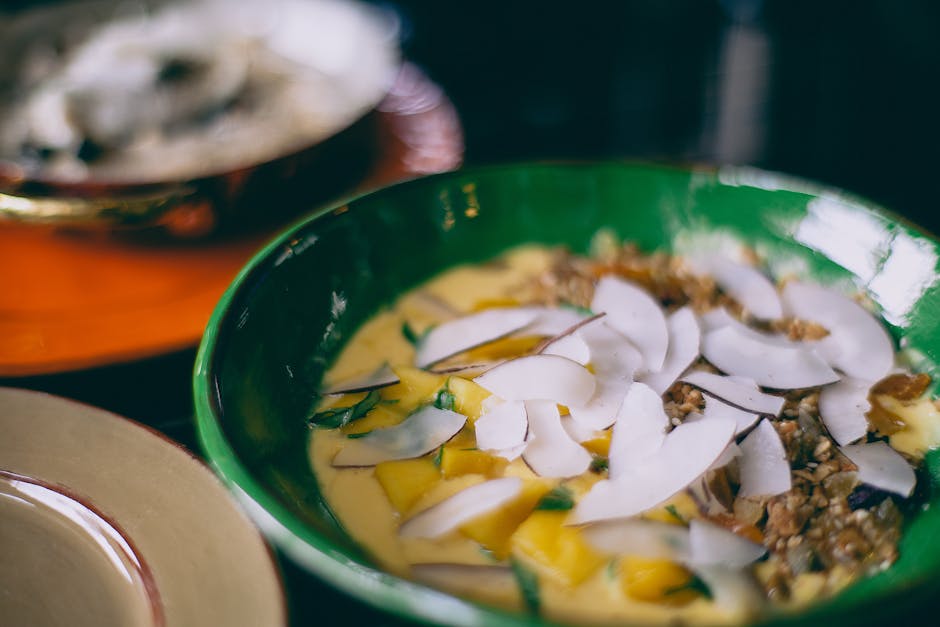For centuries, the vibrant, warming embrace of ginger and turmeric has been celebrated in cultures across the globe. Ginger, with its origins likely in Southeast Asia, boasts a history stretching back thousands of years. Ancient texts from India and China detail its use as a culinary ingredient and a powerful medicinal remedy. Its pungent aroma and spicy bite have made it a staple in countless dishes and beverages, from savory curries to sweet desserts. Meanwhile, turmeric, a close relative of ginger, hails from the same region and shares a similarly rich history. Its earthy, slightly bitter flavor and vibrant golden hue have earned it a place of honor in both cuisine and traditional medicine, particularly within Ayurvedic and Chinese practices.
The combination of ginger and turmeric in a tea represents a potent synergy of flavors and health benefits. Studies have shown that both ginger and turmeric possess potent anti-inflammatory properties, contributing to their long-standing reputation as natural remedies. Ginger, for example, is often used to soothe upset stomachs and ease nausea, while turmeric’s curcuminoid compounds are increasingly recognized for their potential role in supporting overall well-being. Globally, the market for turmeric alone is booming, with projections reaching billions of dollars annually, reflecting a growing awareness of its health benefits. This popularity underscores the enduring appeal of these two remarkable ingredients.
Beyond their individual merits, the fusion of ginger and turmeric in a tea holds significant cultural weight. In many Asian countries, drinking warm, spiced beverages is a deeply ingrained tradition, symbolizing comfort, hospitality, and healing. The ritual of preparing and sharing a cup of ginger turmeric tea often transcends a simple beverage; it becomes a moment of connection, relaxation, and self-care. From the bustling street markets of India to the tranquil tea houses of China, these spices are woven into the fabric of daily life, their presence signifying not just flavor but also a deep-rooted cultural heritage.
Our Best Ginger Turmeric Tea harnesses the power and tradition of these ancient ingredients, carefully blending them to create a beverage that is both delicious and beneficial. We use only the highest quality ginger and turmeric roots, ensuring a rich, authentic flavor profile. More than just a drink, it’s an experience – a journey through centuries of culinary and medicinal wisdom, designed to nourish your body and soul. Prepare to be transported to a world of warmth, flavor, and wellness, one sip at a time.
Ingredients and Measurements
Crafting the perfect cup of Best Ginger Turmeric Tea requires careful attention to the ingredients and their proportions. This recipe prioritizes fresh ingredients for the most vibrant flavor and potent health benefits. However, feel free to adjust quantities to your personal preference, noting that altering the ratios might subtly change the overall taste profile.
Fresh Ginger: We recommend using approximately 1-2 inches of fresh ginger root for a medium-sized mug (8-10 ounces) of tea. For a stronger ginger flavor, increase this to 2-3 inches. Peel the ginger thoroughly before using. Using a vegetable peeler is the easiest method. Avoid using pre-ground ginger as its potency and flavor are often diminished. Fresh ginger offers a superior, more nuanced taste and contains higher concentrations of beneficial compounds.
Turmeric: Fresh turmeric root, if available, provides the most vibrant color and flavor. Use about 1-inch piece of fresh turmeric, peeled and chopped. If using fresh turmeric, you might find its slightly bitter taste more pronounced than the dried variety. If you prefer using turmeric powder, start with 1 teaspoon (about 2 grams) and adjust to taste. Too much turmeric can lead to a slightly bitter taste, so start with a smaller amount and add more gradually until you reach your desired level of intensity.
Water: The quality of your water significantly impacts the final taste of your tea. Use filtered or spring water for the best results. For a medium-sized mug, use about 8-10 ounces (240-300ml) of water. Adjust the quantity according to your mug size. Avoid using hard water, as it can affect the taste and potentially leave a sediment in your tea.
Optional additions for enhanced flavor and health benefits:
- Lemon Juice: The addition of ½ to 1 tablespoon of freshly squeezed lemon juice enhances the flavor and helps your body better absorb the curcumin in turmeric. Use fresh lemon juice for the best results; bottled lemon juice often contains preservatives.
- Honey or Maple Syrup: To sweeten your tea naturally, add 1-2 teaspoons of honey or maple syrup. Adjust according to your sweetness preference. Avoid refined sugars as they offer no nutritional value.
- Cinnamon Stick: A small cinnamon stick (about 1-inch) adds a warm, aromatic note to the tea. Remove the stick before serving.
- Black Pepper: A pinch of freshly ground black pepper enhances the bioavailability of curcumin in turmeric. Use a very small amount, as too much pepper can overpower the other flavors.
Precise measurements are less crucial than achieving a balanced taste. Feel free to experiment with the ratios to discover your perfect blend. Remember to always start with smaller quantities of spices and adjust gradually to your preference.
Equipment List for Brewing the Best Ginger Turmeric Tea
Brewing the perfect cup of ginger turmeric tea requires the right tools. While you can improvise, having the right equipment enhances the flavor and overall experience. This list details the essential and optional equipment, along with recommendations for optimal results.
Essential Equipment:
1. Kettle: A kettle is crucial for heating the water to the ideal temperature. We recommend using a gooseneck kettle for precise pouring and better control over the brewing process. A standard electric kettle will also work perfectly well. Capacity: A 1.5-liter kettle is ideal for brewing multiple cups or preparing a larger batch. Look for one made of stainless steel for durability and even heating. Avoid plastic kettles, as they may leach chemicals into the water at high temperatures.
2. Measuring Tools: Accurate measurements are key to consistent flavor. You will need measuring spoons (at least 1 teaspoon and 1 tablespoon) for spices and measuring cups (at least ¼ cup and 1 cup) for water and other ingredients. Recommendation: Invest in a good quality set of measuring spoons and cups that are easy to clean and read. Digital scales are also helpful for precise measurements, especially if you are making large batches.
3. Tea Infuser or Strainer: This is essential for separating the tea leaves and spices from the brewed liquid. Several options exist: a fine-mesh tea infuser ball (approximately 2.5-3 inches in diameter), a tea strainer placed over your mug, or a French press. Recommendation: A fine-mesh infuser ball is versatile and easy to clean. A French press allows for a more robust extraction of flavor but requires more cleaning.
4. Mug or Teapot: Choose a mug or teapot that is heat-resistant and holds at least 12 ounces of liquid. Recommendation: A ceramic mug or a cast iron teapot maintains heat well, enhancing the enjoyment of your warm ginger turmeric tea. Ensure your choice is microwave-safe if you plan to reheat leftovers.
Optional Equipment:
1. Mortar and Pestle: While not strictly necessary, a mortar and pestle allows you to finely grind your ginger and turmeric, maximizing the release of their flavour and beneficial compounds. Recommendation: If you’re aiming for the most intense flavor, this is a worthy investment.
2. Citrus Juicer: Adding a squeeze of lemon or lime enhances the flavor profile of the tea. A manual or electric citrus juicer can make this task easier and faster. Recommendation: A simple hand-held juicer is sufficient for most needs.
3. Small Cutting Board and Knife: If you prefer using fresh ginger and turmeric, a small cutting board and sharp knife will be necessary for preparing the roots. Recommendation: Choose a cutting board that is easy to clean and a knife that is comfortable to handle.
4. Thermometer: For the most precise brewing, a thermometer will help you monitor the water temperature. While not a necessity, a thermometer ensures consistency in the brewing process. Recommendation: An instant-read thermometer is ideal for quickly checking the water temperature.
By gathering these essential and optional tools, you will be well-equipped to brew a delicious and flavorful ginger turmeric tea every time.
Preparation Phase: Washing and Chopping
Before embarking on the brewing process for the best ginger turmeric tea, meticulous preparation is key to unlocking the full flavor and health benefits of these potent ingredients. This phase focuses on effectively washing and chopping the ginger and turmeric roots to maximize their infusion into the tea.
Begin by selecting fresh, high-quality ginger and turmeric roots. Look for firm, unblemished roots with a vibrant aroma. Avoid any that are soft, shriveled, or show signs of mold or sprouting. The quantity will depend on your desired strength and serving size; a good starting point is approximately 1-inch piece of ginger and ½-inch piece of turmeric for a single cup of tea. For a larger batch, simply scale these measurements proportionally.
Thorough washing is crucial to remove any residual soil, pesticides, or other contaminants from the surface of the roots. Place the ginger and turmeric under cold running water and gently scrub them with your hands or a vegetable brush. Pay special attention to any crevices or irregularities on the surface. You can use a clean vegetable brush to effectively remove any stubborn dirt. Rinse thoroughly until the water runs clear.
Once the roots are impeccably clean, it’s time for chopping. The method you choose will influence the final tea’s texture and strength. For a smoother tea with less intense ginger and turmeric flavor, consider using a microplane grater or a fine grater. Grate approximately 1 tablespoon of ginger and ½ tablespoon of turmeric. This method releases the essential oils effectively, resulting in a more aromatic and flavorful brew.
Alternatively, for a more robust and slightly chunkier tea, opt for finely chopping the ginger and turmeric using a sharp knife. A sharp knife ensures clean cuts and prevents bruising, which can affect the flavor. For this method, finely chop the 1-inch piece of ginger and ½-inch piece of turmeric into small pieces, aiming for roughly 1/8-inch to 1/4-inch pieces. This size allows for sufficient extraction of flavor and avoids overly large pieces that might be unpleasant to drink.
Regardless of your chosen chopping method, it’s important to work quickly to minimize oxidation. Chopped ginger and turmeric are prone to browning and losing some of their potency when exposed to air. If you are preparing a larger batch, chop only what you need immediately, or store the remaining chopped ginger and turmeric in an airtight container in the refrigerator to preserve freshness and flavor for future use.
With your ginger and turmeric meticulously washed and chopped, you are now ready to move to the next stage of crafting your perfect ginger turmeric tea. Remember, proper preparation is the foundation for a truly exceptional and healthy beverage.
Infusion/Steeping Process
Crafting the perfect cup of ginger turmeric tea involves a precise steeping process that unlocks the full spectrum of flavors and health benefits. The key is to find the balance between extracting the potent compounds from the ginger and turmeric without over-steeping, which can lead to bitterness. We recommend using fresh ginger and turmeric whenever possible, as they offer a superior flavor and aroma compared to dried versions.
For a single serving (approximately 8 ounces/240ml): Begin by thinly slicing about 1-inch piece of fresh ginger. The thinner the slices, the faster the beneficial compounds will infuse into the water. Similarly, grate about ½ teaspoon of fresh turmeric root. If using dried turmeric, use approximately ¼ teaspoon – dried spices are generally more potent. You can adjust these quantities to your taste preference; those who prefer a stronger ginger or turmeric flavor can increase the amounts accordingly.
Water Temperature is Crucial: Using water that is too hot can destroy the delicate volatile oils in both ginger and turmeric, resulting in a less flavorful and aromatic brew. Ideally, heat filtered water to around 190-200°F (88-93°C). This temperature is hot enough to extract the beneficial compounds but gentle enough to preserve the subtleties of the spices. A kitchen thermometer is highly recommended for accurate temperature control.
The Steeping Process: Once the water has reached the appropriate temperature, pour it over the ginger and turmeric in a heat-resistant mug or teapot. Avoid using metal containers, as they can react with the turmeric and affect the flavor. Allow the mixture to steep for 5-7 minutes. Steeping for a shorter duration will result in a milder flavor, while a longer steep will produce a more intense, bolder taste. Experiment to find your preferred strength.
Strain and Serve: After steeping, carefully strain the tea through a fine-mesh sieve or tea infuser to remove the ginger and turmeric pieces. This step is essential to prevent sediment from ending up in your cup. You can then enjoy your ginger turmeric tea immediately. Adding a squeeze of fresh lemon juice or a drizzle of honey can enhance the flavor and provide additional health benefits.
For Larger Batches: To make a larger batch, simply increase the quantities of ginger and turmeric proportionally. For example, for a quart (approximately 1 liter) of tea, you might use 4 inches of ginger and 2 teaspoons of grated fresh turmeric (or 1 teaspoon of dried). Remember to adjust the steeping time slightly; larger batches may require a few extra minutes to ensure thorough extraction.
Storage: Leftover ginger turmeric tea can be stored in an airtight container in the refrigerator for up to 2 days. However, the flavor and potency may diminish over time, so it’s best enjoyed fresh. Never reheat the tea, as this can reduce its beneficial properties.
Experimentation is Key: Don’t be afraid to experiment with different quantities of ginger and turmeric to find your perfect balance. You can also add other ingredients, such as cinnamon, cloves, or black pepper (which enhances turmeric absorption), to create your own unique blend. Enjoy the process of discovering your ideal ginger turmeric tea recipe!
Sweetening and Flavor Enhancement (Optional)
While the natural pungency and subtle sweetness of ginger and turmeric shine through in our Best Ginger Turmeric Tea recipe, many find that adding a touch of sweetness or complementary flavors enhances the overall experience. This section details optional additions to customize your tea to your liking. Remember, moderation is key; too much sweetener can overwhelm the delicate spice notes.
Honey: A classic pairing with ginger and turmeric, honey offers a natural sweetness and complements the earthy notes of the spices. We recommend adding 1-2 teaspoons of raw honey per cup of tea, stirring gently until dissolved. Raw honey provides additional health benefits due to its enzymes and antioxidants. Adjust the amount according to your preference. Consider using different varietals of honey, such as wildflower or buckwheat, to explore diverse flavor profiles.
Maple Syrup: A slightly more robust sweetness compared to honey, maple syrup adds a caramel-like complexity that works well with the warming spices. Start with ½ to 1 teaspoon per cup, stirring thoroughly. Grade A maple syrup is ideal for its balanced flavor, avoiding overly strong or bitter varieties. The subtle hint of woodiness in maple syrup can beautifully enhance the earthy undertones of the turmeric.
Agave Nectar: Agave nectar offers a sweeter, slightly fruitier taste than honey or maple syrup. Use sparingly, as it has a higher glycemic index. Begin with ½ teaspoon per cup and increase gradually to taste. Avoid using excessive amounts of agave nectar due to its potential impact on blood sugar levels.
Other Flavor Enhancers: Beyond sweeteners, various additions can elevate the taste of your ginger turmeric tea. A squeeze of fresh lime or lemon juice (about ½ a lime or lemon) brightens the flavors and adds a refreshing zing. A pinch of cinnamon (⅛ teaspoon) provides warmth and depth, complementing the ginger beautifully. A few cardamom pods (2-3, lightly crushed) add a fragrant, aromatic twist. Experiment with small quantities to avoid overpowering the primary flavors of ginger and turmeric.
Important Considerations: When adding sweeteners or flavor enhancers, it’s best to do so after brewing the tea. Adding them to the boiling water can alter the chemical composition of the ingredients and potentially reduce their beneficial properties. Always start with a small amount and adjust to your liking. Taste your tea frequently as you add ingredients to prevent over-sweetening or overpowering the delicate balance of flavors.
Professional Recommendation: For a truly refined experience, consider infusing your tea with a small piece of fresh ginger and a thin slice of turmeric root directly during the brewing process, then adding your chosen sweetener and flavor enhancers afterwards. This ensures the maximum extraction of flavor and beneficial compounds from the ginger and turmeric while allowing you to precisely control the final taste.
Serving Suggestions
Best Ginger Turmeric Tea offers a versatile and delicious beverage experience. To fully appreciate its unique flavor profile and maximize its potential health benefits, consider these serving suggestions:
Classic Hot Serve: For the quintessential experience, prepare your tea as directed on the package. Once brewed, pour 8 ounces (240ml) of the hot tea into your favorite mug. For an enhanced flavor, consider adding a squeeze of fresh lime juice (approximately ½ a lime) to brighten the taste and boost the Vitamin C content. A drizzle of raw honey (1-2 teaspoons, to taste) can add sweetness and further enhance the overall flavor profile. Avoid using refined sugar, as it can negate some of the tea’s health benefits.
Iced Ginger Turmeric Tea: Brew a strong batch of tea using slightly more tea bags or loose leaf than you would for a hot cup (approximately 1.5 times the usual amount). Allow the tea to cool completely. Once cooled, pour the tea over ice in a tall glass. For a refreshing twist, add a splash of sparkling water (approximately 4 ounces/120ml) and a few slices of fresh ginger and turmeric root for visual appeal and added zing. Consider adding a few mint leaves for a cooling and aromatic variation.
Golden Milk Latte: Elevate your tea experience by creating a luxurious Golden Milk Latte. Prepare your Best Ginger Turmeric Tea as usual. In a separate saucepan, gently warm 1 cup (240ml) of your preferred milk (dairy or non-dairy). Once warm (not boiling), whisk in 1-2 teaspoons of your favorite nut butter (almond, cashew, or sunflower) for creaminess and healthy fats. Add a pinch of cardamom and cinnamon for a warming spice blend. Finally, combine the warm milk mixture with your brewed ginger turmeric tea, stirring well. Top with a sprinkle of cinnamon or a pinch of black pepper (black pepper enhances the absorption of curcumin, a key component of turmeric).
Tea-Infused Cooking: Don’t limit yourself to just drinking this flavorful tea! Use the brewed tea to add a unique depth of flavor to your culinary creations. It pairs exceptionally well with savory dishes. You can use it as a base for marinades for chicken or fish, adding a subtle warmth and a hint of spice. A small amount of the tea added to soups or stews can add complexity and an unexpected twist. It can also be incorporated into sauces or dressings for a healthy and flavorful alternative.
Experiment and Personalize: These are just starting points. Feel free to experiment with different additions to tailor the tea to your personal preferences. Try adding other spices like cloves, star anise, or even a dash of cayenne pepper for a spicy kick. Fresh fruit like berries or oranges can also add a delightful dimension to your tea. Remember to always start with small amounts of additions and adjust to your taste. Enjoy the process of discovering your perfect cup!
Best Ginger Turmeric Tea: Recommendations
Our Best Ginger Turmeric Tea offers a delightful blend of warming ginger and vibrant turmeric, providing a delicious and healthy beverage perfect for any time of day. To fully enjoy its benefits and flavor, we recommend the following:
Serving Suggestions: For the optimal experience, we suggest brewing one tea bag per cup (8oz) of freshly boiled water. Steep for 5-7 minutes, allowing the flavors to fully infuse. For a stronger brew, increase the steeping time or use two tea bags. You can enjoy it hot, straight from the cup, or allow it to cool slightly for a refreshing iced tea. Experiment with adding a squeeze of fresh lime or lemon juice for a zesty twist, a drizzle of honey or maple syrup to enhance sweetness, or a pinch of cinnamon for an extra layer of warmth and spice. A splash of milk or almond milk can also create a creamy variation.
Storage Conditions: To maintain the freshness and quality of your Best Ginger Turmeric Tea, store it in a cool, dry place away from direct sunlight and moisture. Ensure the tea bags remain sealed in their original packaging until use. Proper storage will help preserve the aromatic oils and potent compounds within the tea, ensuring you enjoy the best possible flavor and health benefits each time you brew a cup.
Complementary Dishes: The earthy and slightly spicy notes of our ginger turmeric tea pair beautifully with a variety of dishes. It complements savory breakfast options like eggs, avocado toast, or savory oatmeal. It also works wonderfully with lighter lunches such as salads, soups, or sandwiches. For a more indulgent pairing, consider enjoying it alongside Indian curries, stir-fries, or roasted vegetables. The tea’s warming properties make it an excellent accompaniment to comforting meals on colder days.
Nutritional Information (per 8oz serving, brewed from one tea bag): Calories: Approximately 5-10 (depending on added sweeteners). Note: This is an approximation and can vary based on brewing strength and added ingredients. Our tea is naturally low in fat and sodium. It’s a good source of antioxidants thanks to the ginger and turmeric, contributing to overall well-being. Please note: This information is not intended as a substitute for professional medical advice. Consult your doctor or healthcare provider for any questions regarding your dietary needs.
Important Considerations: While generally safe for consumption, individuals with certain medical conditions or those taking specific medications should consult with their healthcare professional before regularly incorporating ginger turmeric tea into their diet. Pregnant or breastfeeding women should also exercise caution and seek advice from a healthcare provider before consuming large quantities of this tea.
We are confident that you will thoroughly enjoy our Best Ginger Turmeric Tea. We encourage you to experiment with different serving methods and pairings to discover your personal favorite way to savor this delicious and healthful beverage.





